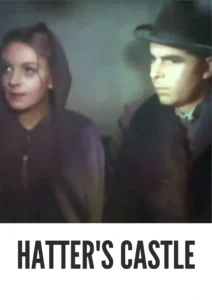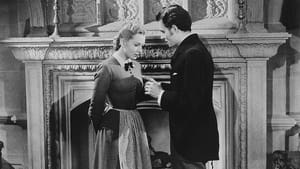Video Sources 0 Views

Download Hatter’s Castle (1942) Colorized HD | Robert Newton | Drama Melodrama Classic
Synopsis
Pride, Poverty, and Ruin: Hatter’s Castle (1942) in Stunning Color

Delve into the intense world of early 19th-century Scotland with Hatter’s Castle, a powerful drama originally released in 1942, now beautifully colorized for a modern viewing experience. Based on the novel by A.J. Cronin, this film, sometimes known as A Woman’s Secret, explores themes of pride, obsession, and family destruction. Perfect for fans of classic cinema and emotionally charged stories, this HD download brings a poignant and visually enhanced version of the film to your screen.
Hatter’s Castle Storyline: A Descent into Darkness
Hatter’s Castle tells the story of James Brodie (Robert Newton), a proud and tyrannical hatter whose relentless ambition and arrogance lead to the ruin of himself and his family. Set in the Scottish town of Levenford, the film portrays Brodie’s obsessive desire to prove his superiority, which blinds him to the needs and feelings of those around him.As Brodie’s fortunes decline, his behavior becomes increasingly erratic and destructive. His mistreatment of his wife, Mary (Beatrice Varley), and daughter, Nessie (Deborah Kerr), drives them to despair, while his son, Matthew, becomes estranged from the family. The film follows Brodie’s tragic downfall as he loses everything he holds dear, ultimately facing the consequences of his own hubris. Hatter’s Castle is a harrowing tale of a man consumed by pride, offering a stark commentary on the destructive nature of unchecked ambition.
Movie Cast
The film features a stellar cast of actors who vividly portray the complex characters in this dramatic story:
- Robert Newton as James Brodie
- Deborah Kerr as Nessie Brodie
- Beatrice Varley as Mary Brodie
- Emlyn Williams as Dr. Renwick
- James Mason as Dr. David Stirling
Movie Genre
Hatter’s Castle falls into the genre of dramatic melodrama, characterized by its intense emotional themes, complex characters, and tragic storyline. Its exploration of family dynamics, social issues, and personal struggles makes it a compelling and thought-provoking film.
Historical Context: Wartime Cinema and Literary Adaptation
Released in 1942, during the height of World War II, Hatter’s Castle reflects the somber mood of the time, offering a dark and unflinching portrayal of human nature. As an adaptation of A.J. Cronin’s popular novel, the film brought a beloved literary work to the screen, appealing to audiences seeking both entertainment and emotional depth. Though not always considered a lighthearted film, Hatter’s Castle provided a powerful and resonant cinematic experience for wartime audiences.
Colorization Details
This colorized version of Hatter’s Castle has been meticulously restored using state-of-the-art digital techniques, enhancing the visual impact while carefully preserving the film’s original atmosphere and emotional intensity. The colorization process involved detailed analysis of the original black and white footage, with careful attention to historical accuracy and aesthetic considerations. Advanced algorithms were employed to select appropriate color palettes and enhance image quality, resulting in a vibrant and engaging viewing experience. This painstaking process breathes new life into the characters and settings, making the story even more impactful for modern audiences. Whether one appreciates colorizing classic films or not, this version introduces the film to a new audience, ensuring its legacy for years to come.
Technical Details
- Director: Lance Comfort
- Screenplay: Rodney Ackland, James Bridie, Paul Merzbach, Warwick Ward
- Based on: the novel by A.J. Cronin
- Cinematography: Mutz Greenbaum
- Edited by: Sidney Cole
- Production Company: Paramount British Pictures
- Distributed by: RKO Radio Pictures
- Runtime: 104 minutes
Technical Specifications
- Download Format: MP4
- Resolution: HD (1080p)
- Compatibility: Compatible with most devices, including smartphones, tablets, computers, and smart TVs.
Reviews and Critical Reception
Hatter’s Castle (1942) is recognized for its powerful performances and intense dramatic themes, offering a memorable and thought-provoking cinematic experience. While opinions on the film may vary, it remains a significant work in British cinema, showcasing the talents of its cast and crew. As a compelling adaptation of a beloved novel, Hatter’s Castle continues to resonate with audiences interested in emotionally charged stories and historical dramas.
FAQs
- Q: What is Hatter’s Castle about?
- A: Hatter’s Castle is a tragic drama about a proud and tyrannical man whose ambition leads to the ruin of his family.
- Q: Is Hatter’s Castle (1942) a well-known film?
- A: While not as widely known as some classic films, Hatter’s Castle is a respected and memorable work in British cinema.
- Q: Is this version of Hatter’s Castle colorized?
- A: Yes, this version has been professionally colorized to enhance the viewing experience.
- Q: What makes Hatter’s Castle interesting for classic film fans?
- A: Hatter’s Castle offers powerful performances, intense drama, and a compelling adaptation of a beloved novel.
- Q: What is the download format?
- A: The download format is MP4, which is compatible with most devices.
- Q: What resolution is the download?
- A: The resolution is HD (1080p), providing a high-quality viewing experience.
Download Now in HD!
Watch Hatter’s Castle Today!










